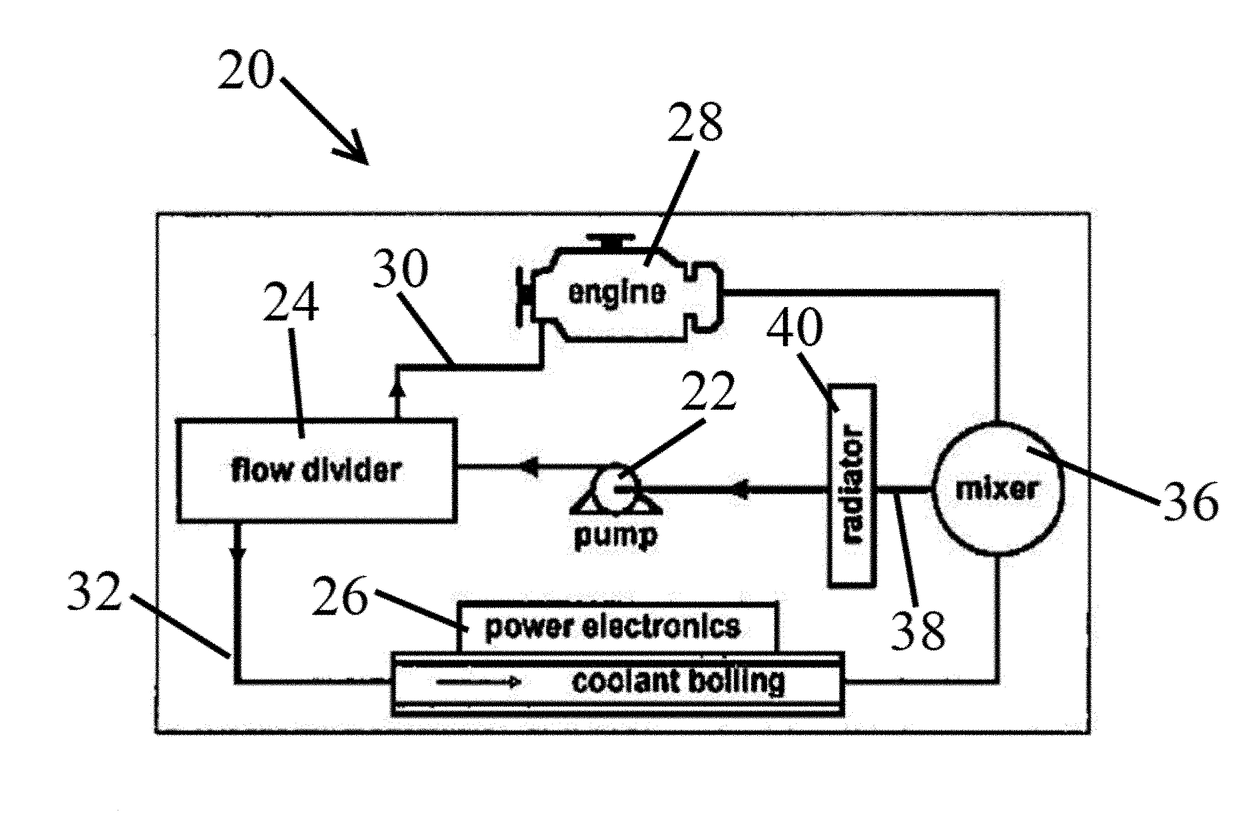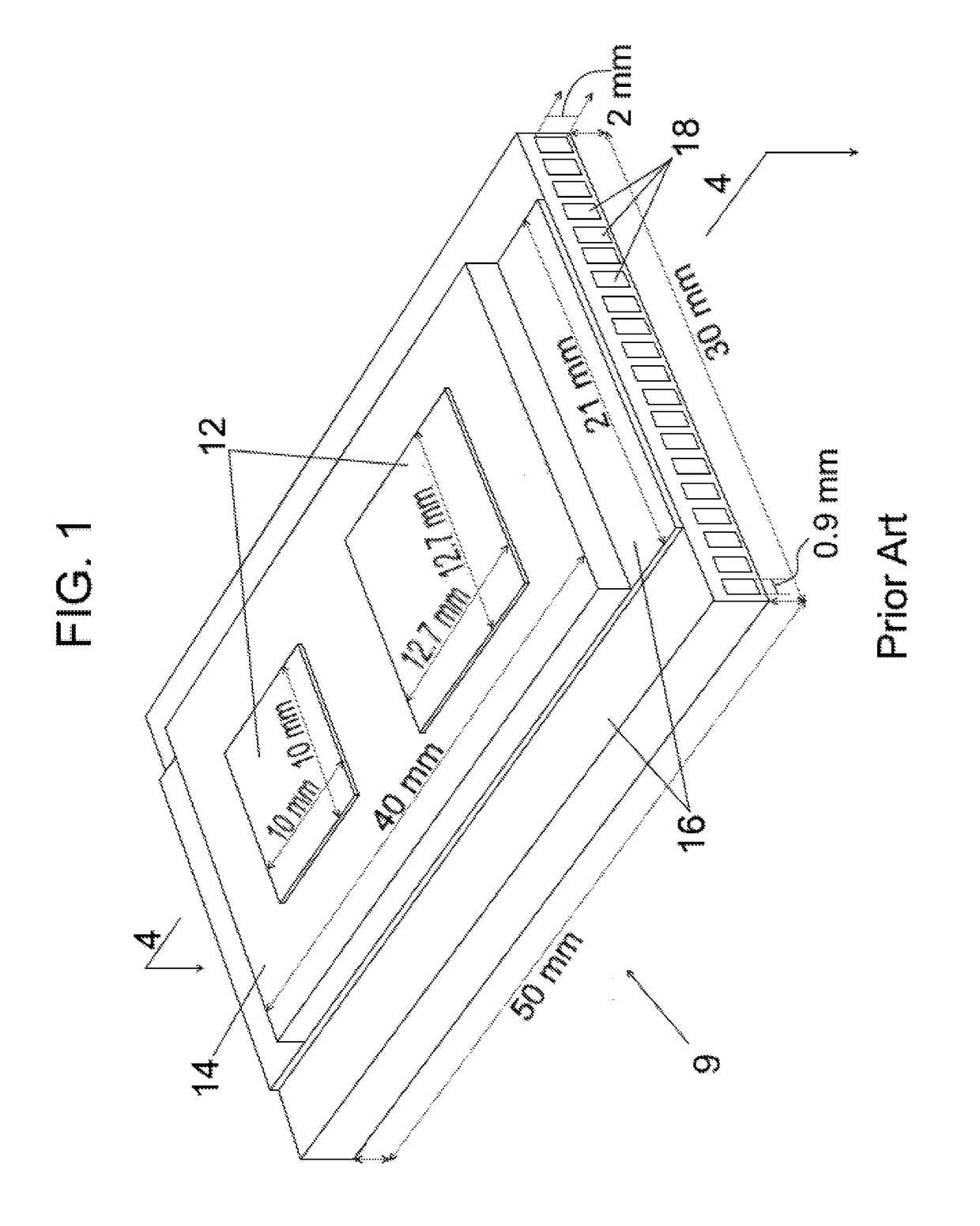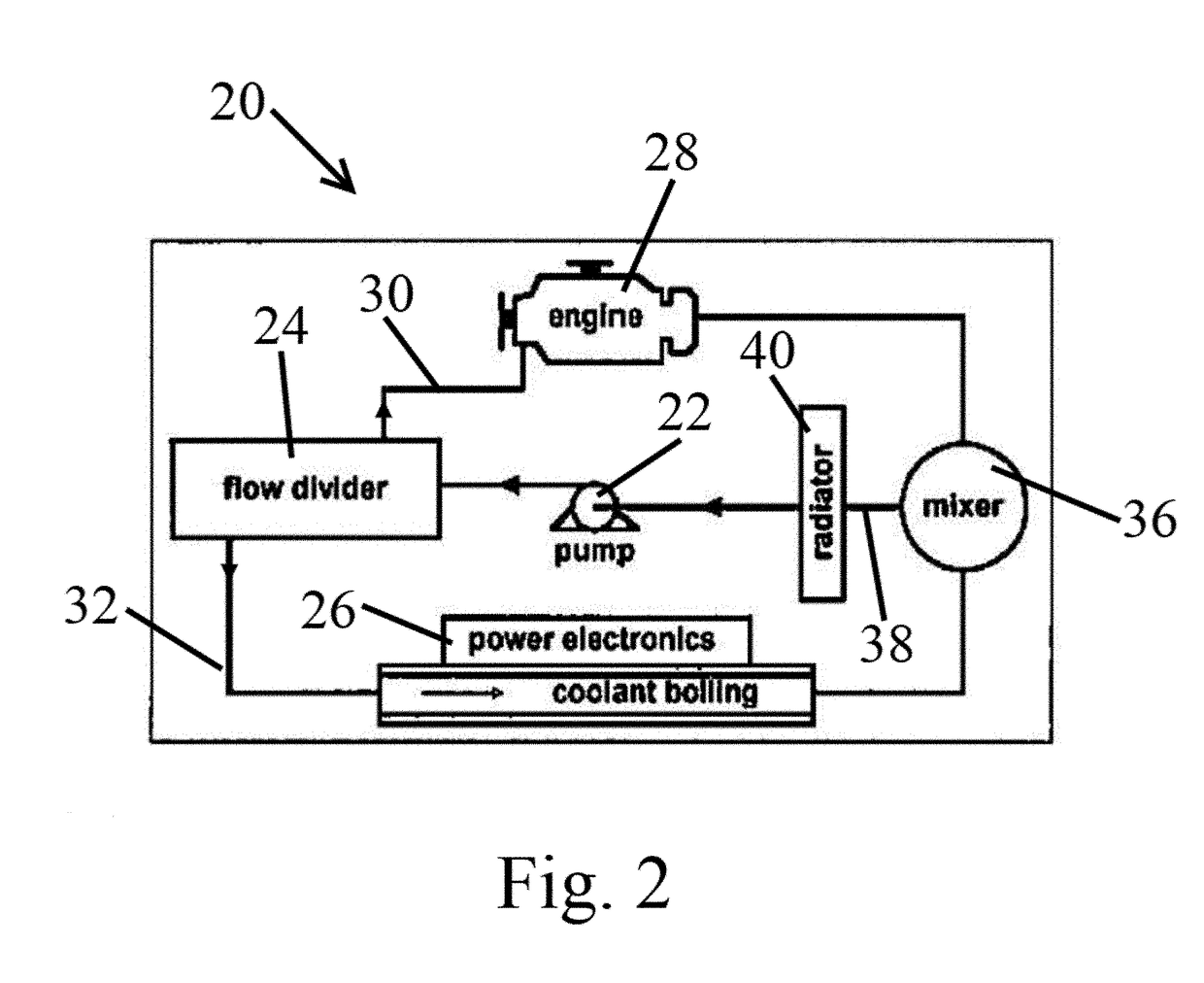System for cooling hybrid vehicle electronics, method for cooling hybrid vehicle electronics
a hybrid vehicle and electronic technology, applied in the direction of machines/engines, mechanical/solid-state device details, machines/engines, etc., can solve the problems of reducing the available space for other components, reducing the cooling rate of vehicles, and not being able to achieve the 105° c. coolant used in standard radiators, etc., to achieve the effect of reducing costs and weight, reducing pumping power, and increasing cooling ra
- Summary
- Abstract
- Description
- Claims
- Application Information
AI Technical Summary
Benefits of technology
Problems solved by technology
Method used
Image
Examples
example
[0055]As noted supra, an embodiment of the invented system and method utilizes typical anti-freeze, anti-boil fluids found in internal combustion engine paradigms. The main engine cooling system works at about 2 atm absolute or 1 atm gauge (approximately 15 psig) of pressure. A corresponding saturation temperature for the 50 / 50 ethylene glycol / water mixture is about 129° C. Simulations show that there is enough of a subcooled range for keeping the juncture temperature of power electronics within the preferred aforementioned 150-175° C. window.
[0056]Simulations by the inventors revealed the conditions under which the coolant exits the power electronic channels and is still be below the saturation point. Exemplary conditions include the following:[0057]Because the subcooled boiling system is integrated into the main engine cooling system, the conventional engine coolant, a 50 / 50 EG / W mixture, is used for power electronics cooling.[0058]The pressure in the cooling channel for power ele...
PUM
 Login to View More
Login to View More Abstract
Description
Claims
Application Information
 Login to View More
Login to View More - R&D
- Intellectual Property
- Life Sciences
- Materials
- Tech Scout
- Unparalleled Data Quality
- Higher Quality Content
- 60% Fewer Hallucinations
Browse by: Latest US Patents, China's latest patents, Technical Efficacy Thesaurus, Application Domain, Technology Topic, Popular Technical Reports.
© 2025 PatSnap. All rights reserved.Legal|Privacy policy|Modern Slavery Act Transparency Statement|Sitemap|About US| Contact US: help@patsnap.com



